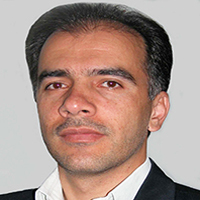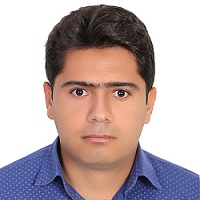The Comparative Analysis of Urban Employment Indexes in Iran Towns
Author(s):
Abstract:
Introduction
The role of employment in the vitality of modern urban societies’ life is not a mystery to anyone. Unemployment and the ensuing issues constitute the most complicated of current urban planning issues which give birth to a plethora of deleterious social، cultural، security and even environmental complexities as well as to some certain economic consequences which directly or indirectly influence all aspects of urban planning in a sense that one could say many of the problems and issues of urban societies result from ill employment structures. Since employment and inequality are two interrelated and interdependent issues، unequal employment opportunities in different areas paves the way for inequality in other domains of development and results in developmental inequality among different areas، an inequity in creating employment opportunities، thus making some areas more developed than others which in long run leads to a lack of equilibrium in urban system of the country. Therefore، comparing and analyzing urban employment indices of different areas of the country and categorizing them in terms of urban employment development and providing a logical prioritization can prepare the ground for a well-informed intervention in urban employment planning of the country along with maintaining the community system equilibrium and establishing stable urban development. Methodology
In this study، Iranian cities are examined and compared in terms of urban employment indices using Maurice model and TOPSIS algorithm and arranged in the order of their urban development level and categorized، and the results were displayed in GIS environment on the map using ArcMap software. SPSS was employed to analyze and the data and test the hypotheses. The data used in indexing were the results of the public census of 1385 (2006) retrieved from the portal of the national statistical center of Iran. Discussion
The cities were divided into 4 homogenous categories based on their employment development which accordingly، from a total of 336 cities، 19 cities are placed in level one، 123 in level 2. 146 in level 3 and 87 cities are placed in the last level. Three cities of Roshtkhar، Sarayan and Mahvelat have the three top places in terms of employment development، against Koohrang، Abu Musa، and Masjed Suleiman standing in the last places in that respect. The value (the cities’ level of development) fluctuates between the upper limit of 0. 556 and the lower limit of 0. 286 and difference between its highest and lowest values is 0. 270 and the first city (Roshtkhar) has developed 1. 943 times more than the last city (Koohrang). The mean of urban development in the cities is 0. 397. The level of inequality in terms of urban development among Iranian cities is low (about 0. 1). There is a slight inverse correlation (-0. 217) between the two parameters of “spatial share of urban population of the cities” and their “urban employment development.” According to the mean of urban employment development of the cities of each province، the provinces were divided into homogenous groups in a manner that 4 provinces were placed in level one، 13 provinces in level two، 8 provinces in level three and 5 provinces in the last level (four) of development the major concentration being among the middle categories. In this regard، the provinces of Central Khorasan، Northern Khorasan، and Kohkiluye Va Boyer Ahmad stand in the first top places and three provinces of Tehran، Sistan-Baluchestan، and Kurdistan stand in the last places، respectively. Conclusion
Regarding urban employment indices، the cities of the country are from being developed and only 8 cities possess a semi-developed standing while other cities are in a state of underdevelopment. There is no considerable inequality and unevenness among cities in terms of urban employment development and also، cities with a higher ratio of population do not enjoy a higher level of urban employment development. Concerning the lowly developed conditions of some cities in comparison to other cities in regard with urban employment، in order to maintain and improve the equilibrium of the urban system of the country in the long run، it is recommended that any intervention in the urban employment of our cities be carried out based a well-informed prioritization.Keywords:
Language:
Persian
Published:
Geography and Environmental Planning, Volume:24 Issue: 1, 2013
Pages:
109 to 128
magiran.com/p1159450
دانلود و مطالعه متن این مقاله با یکی از روشهای زیر امکان پذیر است:
اشتراک شخصی
با عضویت و پرداخت آنلاین حق اشتراک یکساله به مبلغ 1,390,000ريال میتوانید 70 عنوان مطلب دانلود کنید!
اشتراک سازمانی
به کتابخانه دانشگاه یا محل کار خود پیشنهاد کنید تا اشتراک سازمانی این پایگاه را برای دسترسی نامحدود همه کاربران به متن مطالب تهیه نمایند!
توجه!
- حق عضویت دریافتی صرف حمایت از نشریات عضو و نگهداری، تکمیل و توسعه مگیران میشود.
- پرداخت حق اشتراک و دانلود مقالات اجازه بازنشر آن در سایر رسانههای چاپی و دیجیتال را به کاربر نمیدهد.
In order to view content subscription is required
Personal subscription
Subscribe magiran.com for 70 € euros via PayPal and download 70 articles during a year.
Organization subscription
Please contact us to subscribe your university or library for unlimited access!



